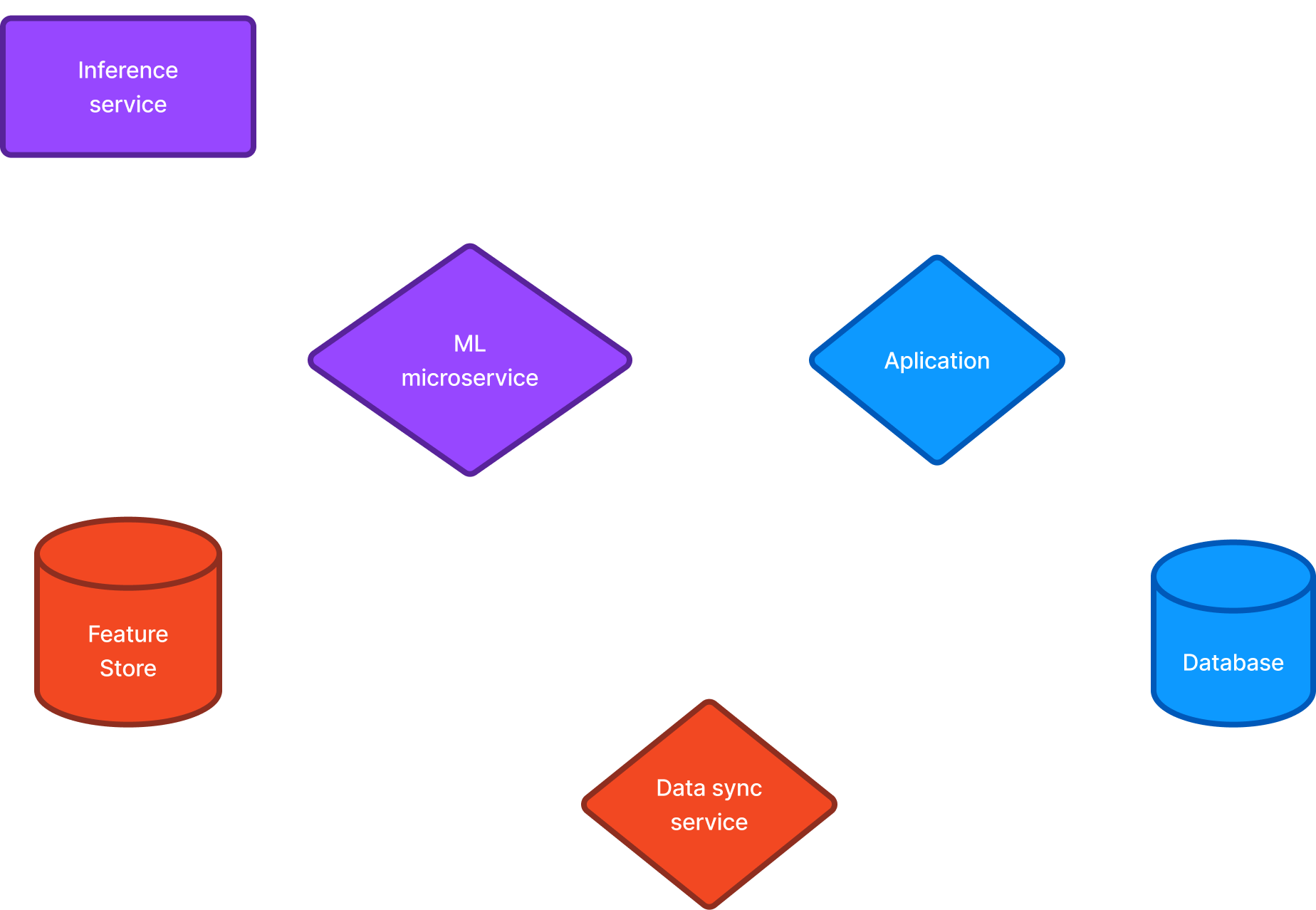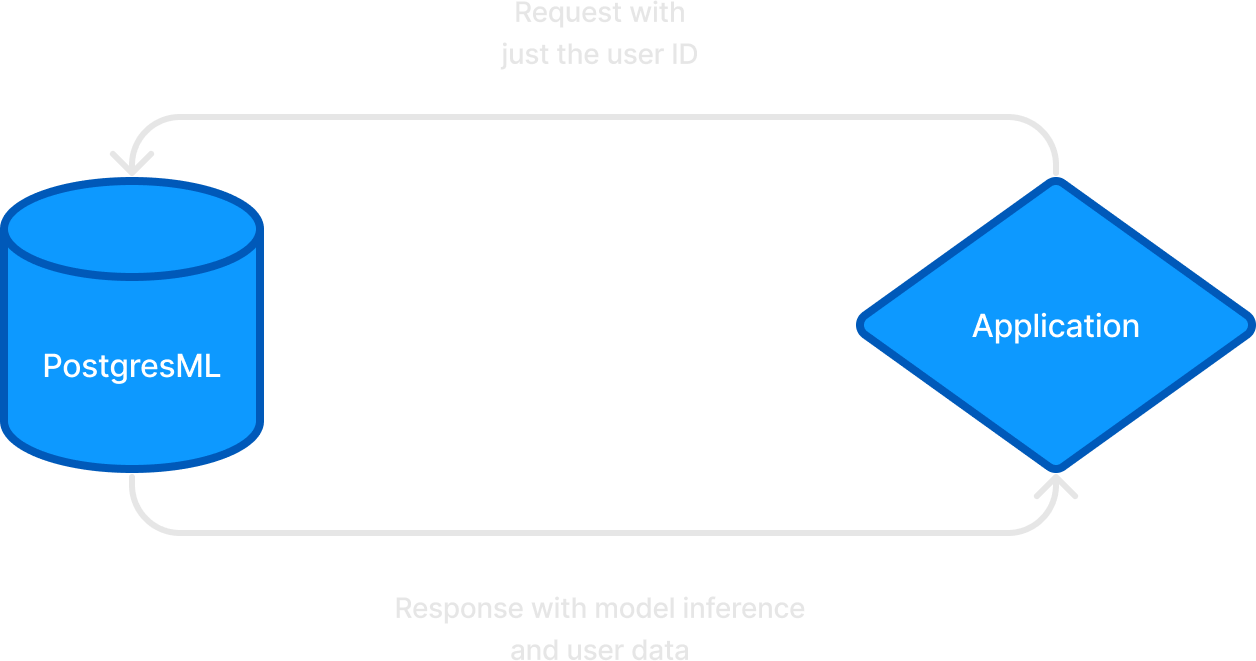Why PostgresML?
PostgresML offers a unique and modern architecture which replaces service-based machine learning applications with a single database. The benefits of this approach are measurable in performance, ease of use, and data integrity.
Service-based architecture
Most applications today are built using services. In the extreme case, microservices with singular purpose are employed to achieve additional separation of concerns.
For an application to use a machine learning model, it is typical to build and maintain separate services and data synchronization pipelines. This requires machine learning engineers to work in Python to build and deploy their models separately from the application.

Impact
Building on top of service-based architecture has major performance disadvantages. Any task that falls outside the domain of a specific engineering team, like machine learning, will require additional communication between teams, and additional services to be built and maintained.
Communication between services is done with stateless protocols like gRPC or HTTP, which require additional context to process a request, fetched from a database or a cache. Since communication happens over the network, serialization and deserialization of the request and response is required, costing additional time and resources.
The diagram above illustrates the work required to service each user request. With below-linear scaling characteristics and increasing brittleness, this architecture eventually breaks down and costs engineering time and resources.
PostgresML architecture
PostgresML simplifies things. By moving machine learning models to the database, we eliminate the need for an additional feature store, data synchronization, inference services, and the need for RPC calls requiring (de)serialization and network latency & reliability costs.

For a detailed overview of how PostgresML works, take a look at our architecture documentation.